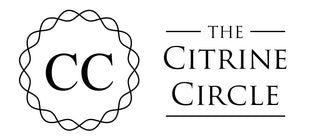The mislabelling between Blue Calcite and Celestite is a really common one that pops up with both online shops and high street shops, and it's important to know which you're buying. Many wholesalers are selling Blue Calcite as Celestite, which is then passed down the supply chain so many shops end up furthering the confusion.
Blue Calcite is a beautiful soft blue colour, and looks very dreamy when polished into sphere, palmstones, freeforms and tumbles. This exact same material is being labelled as polished Celestite - beware it's not!
Raw Blue Calcite:

Polished Blue Calcite:


Celestite very rarely forms in large single crystals, and tumbled Celestite does exist, but it's comparatively rare due to the size of crystal needed. Examples of Celestite geodes can be seen in the next two photos below.


Celestite spheres also exist, but they are geodes polished into a circular shape rather than a large mass. The first photo is of a true Celestite sphere, taken from mineralminers.com, and the second photo is of a Blue Calcite sphere being sold as Celestite on AliExpress.


One easy test to do is to compare the weight - Celestite is a lot heavier for it's size than Calcite (density), so a sphere of Celestite would weigh 1.45 times the same size Blue Calcite sphere.


Troy
So, in your experience, would you say if you get a fully round polished sphere, that it 99.9% usually blue calcite? This could help people that aren’t into the math/physics. I know I was duped on my 1st 5 purchases of “Celestite Spheres”. I know because all you need is the diameter and weight of a sphere to calculate the specific gravity of 2.7-ish (for all my blue calcites) or 4.0 for Celestite (that I never got).
The other thing worth mentioning is that, when left in water, Celestite will revert to gypsum and turn brownish, and is basically ruined. However, with that said, for odd shapes unlike spheres, is it safe (in terms of not ruining Celestite) to quickly dunk a piece into a water measuring cup to determine how much volume it displaces, so you can calculate the specific gravity? I’d obviously dunk & dry the specimen very quickly. This provides an objective fact, as opposed to subjective measures such as: is it waxy, translucent, somewhat transparent, etc.
And while I’m at it…can Kyanite and Angelite be submersed in water? MANY THANKS!
Troy
Great article. I was looking for a Celestite sphere, knowing they were quite rare. I spent the whole night kindly letting the sellers of “Celestite” spheres that based on the dimensions and weights, they CANNOT possibly be Celestite. The responses I got from this crowd were rarely kind, even though I mentioned that they may be innocent by not knowing and trusting the wholesaler…but after knowing the specific gravity of each, there is no excuse to misidentify a sphere, and continue to improperly label it. Odd shapes like hearts and geodes are more difficult, because you have to dunk them in water to get their volume, and if you do that with Celestite, you risk turning it into gypsum, brown, or cracking it. That said, I’ve tested my confidence several times with heart or other odd shapes, and given them a dunk in water to get a specific gravity…but I still have never been wrong, as they are almost always blue calcite. You are spot on with your point that large Celestite geodes are rare enough that most people will not make a sphere or a heart out of them. However, the specific gravity test works well with Kyanite shapes…dunk them quick, note their volume, do the math, and you’ll know what you have. And that is about the only excuse “Celestite” sphere sellers have…not wanting to ruin real Celestite. However, there is no excuse for a Celestite seller to only give you a weight OR a diameter. 99% of these people know science and math will prove them wrong if they supply those 2 pieces of data. Good luck to all! Maybe we should share good stores that have proven themselves to be reputable for Celestite spheres and other larger shapes. I have some great blades of gorgeous dark blue Kyanite if anyone is interested in where I got them. Also looking at spehere’s but that area gets gray fast because kyanite is very often formed on things like quartz with are much lighter, so we laymen can only use our eyes and intuition when the SG ends up between calcite/quartz and pure kyanite. Super pretty though!
evolutionofj
Thank you so much! I have a couple egg celestite geodes then i bought a 5 pound raw stone bag of them for a grid i was making. Though I’ve always wondered how to tell the difference, I believe I actually was sold the right stones, they are all fairly small peices, none of them are tumbled. I also am aware they are two very different energies as well, but we can project, ya know? By thinking, cleansing, clearing and then charging for a certain purpose we can feel it even if it isn’t quite right then we won’t realize till later why it wasn’t really resonating correctly. It would be cool if you could add a blurb about their energies as well somewhere in this story. Cheers for this!! Gratitude, J
Grace
I hate not knowing which crystal I am buying, this will help me a lot! Thanks!
MonstersMarble
Veronica- Blue Kyanite is very distinct. It has blue viens in it if it’s tumbled. I found a chunk in CO and the blue viens are how I identified it. It looks nothing like anything you find online, Pinterest, Facebook etc. Because it is raw and water tumbled by the river I found it in.
Also, Kyanite is much darker than these two in this article. I’ve spent months if not longer IDing certain stones and crystals I’ve found. Good luck in your journey.